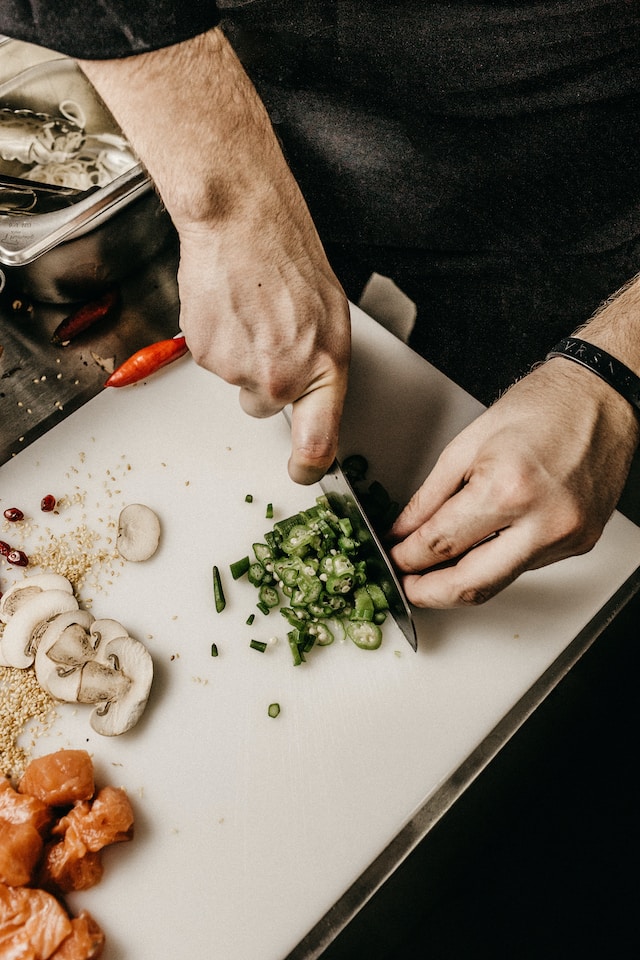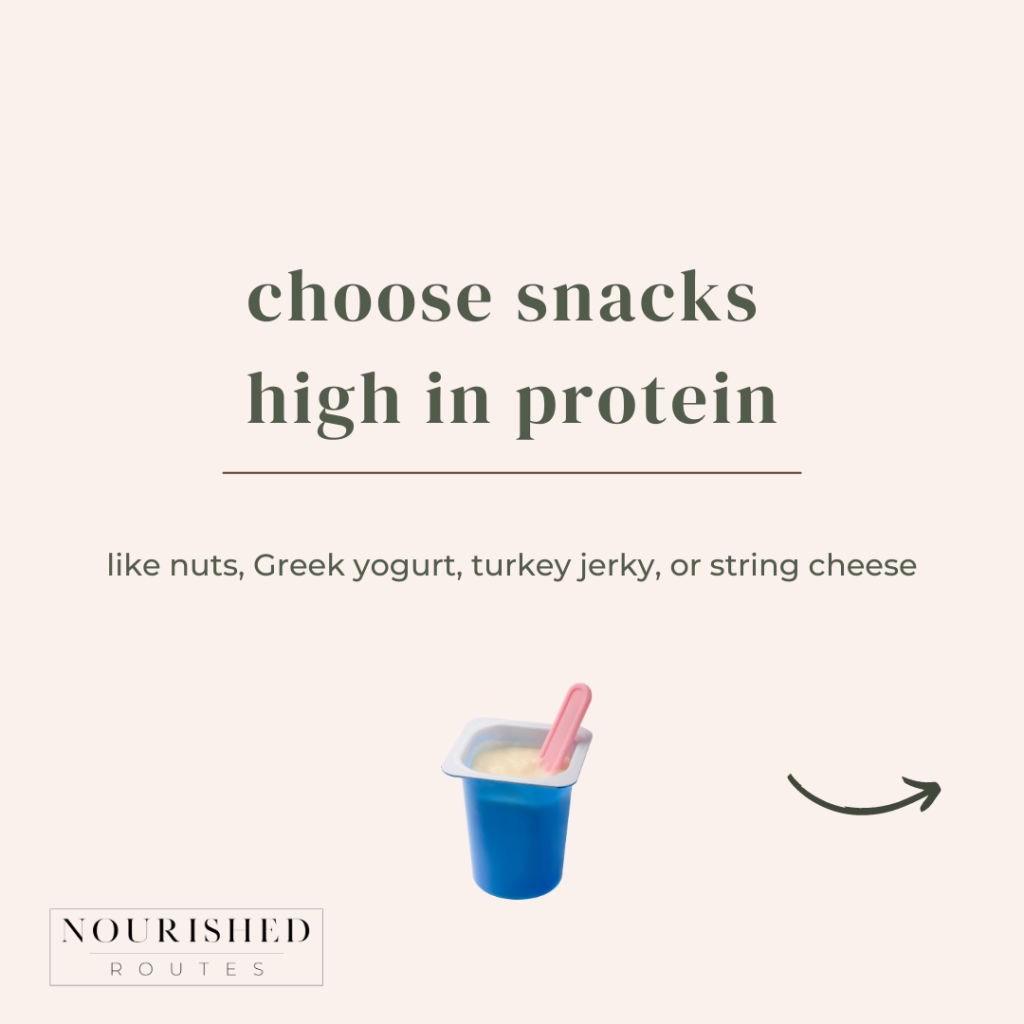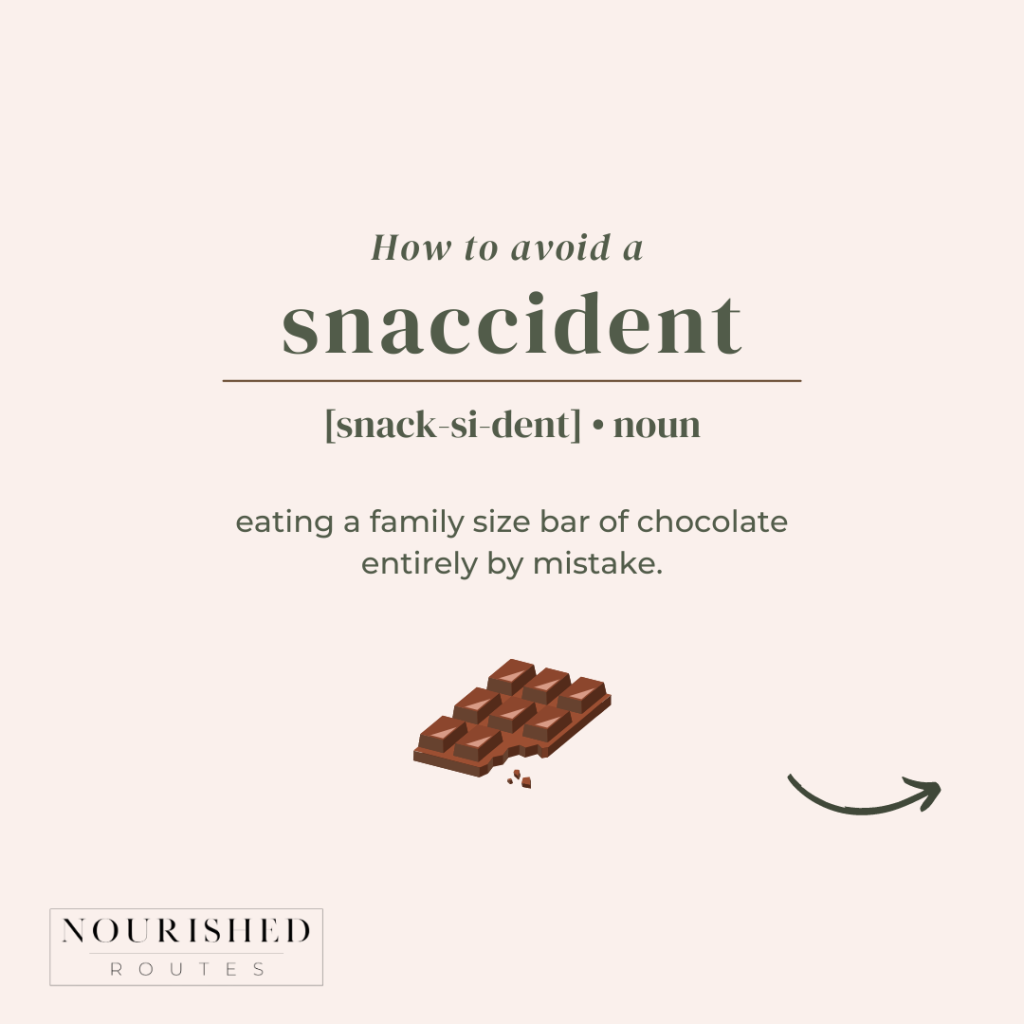If you are looking to get into cooking or already cook and missed some of the beginner techniques then you are in the right place! Simply understanding and obtaining the knowledge on these 7 cooking techniques can improve the quality of your food immensely. Working with a variety of ingredients and equipment throughout cooking is beneficial in achieving flavorful and consistent results. Here are 7 simple cooking techniques that will lead you to want to cook nutritious foods more frequently!
#1: Knife Techniques
Before even getting started in your cooking journey, it is important to obtain knowledge regarding culinary knife techniques to increase your efficiency and safety. A lot of the time, individuals find chopping or cutting vegetables and meats to be tedious. To properly hold a knife, allow your pointer finger and thumb to pinch the blade instead of the handle, following a rocking motion while cutting, using your other hand’s knuckle as a guide.
The first important knife cut to know, typically one of the more difficult types, is mincing. Mincing, for example, used for garlic, specifies for sautes, garnishes, and a way to distribute the maximum flavor as it is an extremely minuscule cut. A dice cut, for example, used for vegetables or potatoes generally, creates uniform squares to obtain an even cooking. The last most common type of knife cut is known as the julienne cut. In julienne cut, often used for salad ingredients/vegetables, is cut into uniform, long strips. Understanding these culinary knife techniques should be a priority skill to learn when beginning in the kitchen that will ultimately allow your dishes to cook more evenly, develop consistent flavors, and overall make your experience in the kitchen that much more enjoyable.
#2: Roasting
While roasting is typically a longer cooking method, roasting creates a crispy exterior and caramelization, overall increasing the flavors of your food. As you develop the skills for this cooking method, you may realize this can become a preferred method in cooking larger proteins. Roasting is a dry cooking method meaning, it uses hot air and dry heat to surround and cook the food evenly. To begin this method, try setting your oven on the bake setting at 400 degrees F, with the time depending on the type of meat, cooking until the surface is browned. As mentioned, although this is a bit of a longer process, roasting could be used for meal prepping as you can throw it in the oven, and use the protein for your meal of choice.
#3: Boiling/Blanching
Although boiling and blanching are similar techniques, they differ in a few aspects. Boiling, as most individuals are familiar with, consists of heating water to its boiling point, which can be used for pasta, vegetables, potatoes, eggs, or meat. One of the disadvantages associated with boiling is its ability to deplete healthy nutrients found in the food you are cooking. For example, boiling a potato can lead to the loss of B and C vitamins through the water, impacting the vegetable’s nutritional content
Blanching, on the other hand, helps preserve the color and nutrients of your food. This is due to after boiling, the vegetables are placed instantly into an ice bath to stop the cooking process. Although nutrients are still lost during the boiling process, it is significantly less due to the cooking process being interrupted by chilled water.
#4: Steaming:
Steaming food generally consists of using a steamer where the food is physically not immersed in water. Steaming, known as a moist cooking method, is done by boiling water, causing the production of steam that cooks the food. This cooking method is preferred for preserving nutrients due to its ability in maintaining Vitamin C. Researchers have found that steaming vegetables such as broccoli and spinach reduce their vitamin C content by only 9-15% whereas boiling causes a 22-34% loss of Vitamin C.
#5: Sauteing:
Sauteing involves little amounts of oil in order to cook down foods for a short period of time. To properly saute, heat the pan prior to adding your oil, add your food, and constantly keep the food moving around to maintain even cooking. For example, sauteing onions in a small amount of oil over medium heat until brown enhances the flavor whilst giving the food a slightly sweet taste.

#6: Simmering:
You may find yourself using this culinary preparation method when making soups, proteins, or chilis. These foods are cooked in hot liquids at a temperature below the boiling point of water but just above the temperature for poaching. Simmering works at cooking at lower temperatures more gently, allowing you to incorporate taste and flavors slowly. Another benefit of this cooking technique when preparing soups, sauces, or chilis, is its ability to thicken the product due to liquid evaporation.
#7 Poaching:
As you have most likely heard, one of the most familiar foods associated with this preparation method is a poached egg. Poaching involves cooking food slightly below boiling point, as a gradual way to cook delicate foods such as meats, eggs, fish, and some vegetables. This method is vital in understanding beginner cooking techniques as it is typically a healthier method as it does not require fat to cook, helps maintain food structure, and maintains moisture in a protein.
Putting it All Together
In order to overall improve your cooking skills and confidence in the kitchen, this will typically involve incorporating multiple cooking techniques together. For example, if you are making soup, one may begin by sauteing onion and garlic in a pot, adding your soup contents, bringing it to a boil, and then reducing it to a simmer. To begin more simply, try out sheet pan, one pot, or crock pot meals that utilize just one technique! These cooking ideas involve little dishes, preparation, or experience in the kitchen which can ultimately lead you to build confidence and try out new methods that you have now learned about. Feeling comfortable with each beginner’s cooking technique can allow you to achieve more flavorful, nutritious, and delicious meals to enjoy yourself or with family and friends!
Wanting to up your eating game? Look no further than our free snacking guide, Snack Your Way to Success! In this guide, you’ll receive a full snack list, a snacking planner for busy professionals and parents, and information on the top mistakes to avoid when snacking. Download this free guide here now.
What’s included in the guide? A full snack list, a snack planner, top snacks to eat when on the go, and information on the top mistakes to avoid when snacking.

This article was written by Sammy Bran, nutrition intern. Fact checked by Allison Tallman RD.

